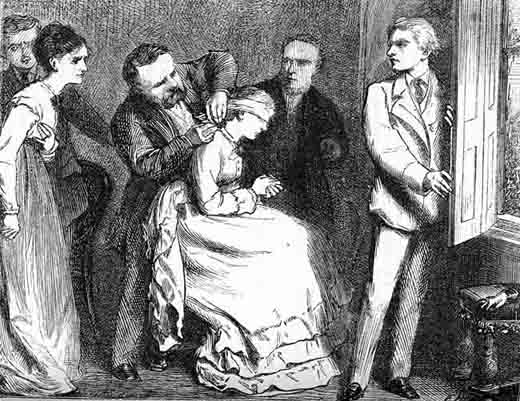Dear Serial Readers,
In this latest installment, it seems that the plot lines and characters are converging, the suspense building as we know, inevitably, Tessa and Romola will discover their marriages to the same man (and perhaps by association to each other). Ah, the delicious dramatic irony when Tessa tells Romola that her prized trinkets were gifts from her husband!
First, on the question of Eliot's seemingly apolitical heroine, as Kari observes. I would not say this is typical of Eliot's female characters, but I do think Julia has a good point here--that often Eliot foregrounds an ethical imperative in terms of how rather than what one does with these questions of the day. In this instance, "the day" hovers across two different historical moments as the narrator does urge readers to notice the collisions and convergences of Renaissance Florence and Victorian England.
This past week I have been corresponding with Donald Weinstein, a historian of the Italian Renaissance who is currently finishing a book on Savonarola for Yale UP. I should mention that Don is the father of my longtime friend Betsy, one of my many attempted recruits for this blog! Although Don objected to aspects of Romola (the saintly title character as too idealized, the excessive display of knowledge of Florentine culture, overeliance on coincidence--such as Romola in this episode encountering Tessa), he did find Eliot to be spot-on in her assessment of Sav. Comparing Eliot's judgment of Savonarola with those of his contemporaries like Machiavelli, Donald Weinstein offers this: "If no more able than they (or than any of us ) to see into the heart of the man, George Eliot, perhaps as clearly as anyone, saw his predicament: having won fame as a prophet by speaking truth to power, Savonarola discovered that in the exercise of power truth unalloyed by compromise is an impossible ideal."
We'll see the wisdom of these words in the upcoming installments!
I loved the description of the "pyramid of vanities" in chapter 49 (I also agree with Julia's reading of the chapter titles, especially those referencing characters like Romola). The image of this monstrous edifice filled with stuff I found so fascinating--a tower of babel-like conglomeration of "marketable abominations." Eliot's depiction of the squad of young "beardless" inquisitors, the boys in white moving around the streets extracting from people (mainly women) the Anathema seemed too a comment on totalitarianism in any form--I kept thinking of the Hitler Youth League.
What do you think the "pyramid of vanities" suggests about books, bibliophilia, scholarship, print, even the novel? There seems throughout the novel something precarious about printed (hand and then press--at this historical transition) words--the power of words and the displacement or attempt to eradicate that power by other powers.
Next time: #11 (May 1863): chaps 52-56. Only three more short installments after that! After that, I'm inclined to turn to Eliot's very first foray into fiction--her three stories published in Blackwood's in 1857, later collected into a volume as Scenes from Clerical Life.
Serially yours,
Susan

No comments:
Post a Comment